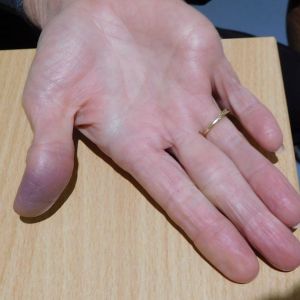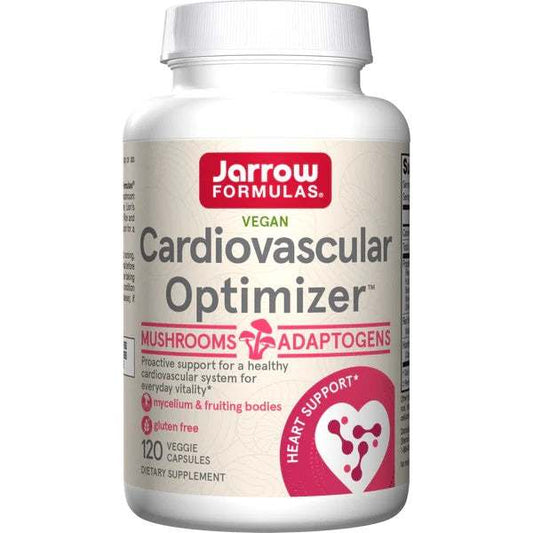Achenbach Syndrome: Causes and Treatments

Related products
Achenbach syndrome, also known medically as paroxysmal hand hematoma or finger apoplexy is a benign, self-limiting condition characterized by sudden bruising on the palm side of one or more fingers.
The causes of Achenbach syndrome are unknown, but many theories have been proposed. Some experts suggest that microvascular injury could play a role in the pathophysiology of Achenbach syndrome, and this might be prompted by minor Trauma that usually goes unnoticed. This is why even though clinical investigations like blood clotting disorders or vasculitis are done, there is no possible underlying cause.
Some symptoms of Achenbach syndrome include spontaneous bluish discoloration of hands that could last for hours. The discoloration gradually fades over days without leaving any marks or scars on the skin. Symptoms may sometimes include swelling and pain, which can be mild or severe.
Even Though the Achenbach syndrome has a rapid onset and alarming appearance, causing individuals to worry about having a chronic underlying disease like heart disease, there is no connection between those implications and the syndrome according to currently available scientific evidence.
Treatment options for Achenbach syndrome include reassurance about the benign nature of the condition and analgesics for managing the pain in acute episodes. They are usually not threatening and do not require further intervention since it is self-limiting, with symptoms subsiding in less than 24 hours.
It is recommended that physicians be aware of this rare syndrome and its benign nature, as it might help reduce unnecessary investigations concerning diagnosis, such as ruling out deep vein thrombosis or vasculitis. Hence, it reduces anxiety-related distress for patients presenting with symptoms characteristic of Achenbach's Syndrome while increasing the overall quality of care.
What is Achenbach syndrome?
Achenbach syndrome is a medical condition characterized by spontaneous bruising on one or more fingers, sometimes accompanied by pain and swelling. The most commonly affected finger is the right index finger. It has a sudden onset and resolves without leaving any permanent marks or scars. Achenbach syndrome affects both males and females but predominantly affects females, with a median age of 49.5 years.
Despite initial alarm due to its abrupt onset and striking appearance, no connections have been established between severe systemic diseases and this benign medical phenomenon called Achenbach's Syndrome. This offers reassurance for affected individuals while urging healthcare professionals to continue learning to manage such instances effectively in routine practice.
What Are The Causes of Achenbach Syndrome?
Achenbach syndrome is a rare disease, and its exact cause is still yet unknown, but experts have suggested a few plausible theories as to why the syndrome occurs. Some of the theories include
Microvascular Injury Minor injuries to small blood vessels in fingers might lead to bruising and pain, typical signs of this syndrome.
Unnoticed Trauma Frequent yet unnoticed traumas, such as mild knocks or bumps that may damage underlying blood vessels, could potentially initiate symptoms associated with Achenbach's.
Idiopathic Causes Sometimes, no apparent cause is found. Some cases might simply present individual variability beyond current scientific understanding, emphasizing the scope of future research.
Vascular Inflammation There's limited evidence suggesting localized Inflammation around finger blood vessels may be involved. This possibility calls for further investigation into how particular biological processes underpin the development of Achenbach's Syndrome.
What Are The Symptoms Of Achenbach Syndrome?
The symptoms of Achenbach syndrome are usually sudden onset bluish or purplish finger discoloration that can, at times, be accompanied by swelling or pain.
Individuals affected by these conditions usually complain of having an abrupt sensation akin to a 'burst' or 'tear,' which is followed rapidly by visible color changes in their skin. In some cases, numbness might be experienced in affected regions, while transient paresthesia (tingling sensations) appears less frequently.
The visual appearance of the discolored finger may cause concern for patients affected by the syndrome and may lead you to think there is some potential serious vascular condition like deep vein thrombosis, but multiple types of research done on the topic have proven there is no connection between systemic disease and spontaneous artery bleeding, leading up to the classic symptom triad evident clearly across the vast majority.
How is Achenbach Syndrome Diagnosed?
Diagnosing Achenbach syndrome involves a thorough medical history review, physical examination, and additional tests like blood tests, imaging studies, or genetic testing. Your doctor will consider your symptoms and whether you have a family history of a similar condition.
Since Achenbach Syndrome is a rare disorder, seeking guidance from medical experts with experience diagnosing and managing such conditions is essential. It is crucial to refrain from self-diagnosing or relying solely on online information for a definitive diagnosis of Achenbach Syndrome. Consulting with a healthcare provider is the best course of action to receive accurate and personalized care.
What Are The Treatments Of Achenbach Syndrome?
Achenbach syndrome is a self-limiting condition, meaning the symptoms subside on their own without any medical intervention. Hence, treatment of Achenbach syndrome focuses on symptom management and mainly patient education on the nature of the condition.
The pain associated with Achenbach syndrome usually resolves within 24 hours but can be managed using analgesics in the acute phase.
Reassuring the patient of the near nature of the condition is one of the important management options for the syndrome because it is seen to eliminate the unnecessary worry associated with the misinterpretation of symptoms.
Frequently Asked Questions
What causes Achenbach syndrome?
The exact cause of Achenbach Syndrome is unknown. However, some theories exist, like minor Trauma leading to microvascular injury might trigger the onset of this condition. Despite extensive research, no specific triggers or predisposing factors have been definitively identified.
What causes finger bruises to appear without injury?
Finger bruises appearing without noticeable injury often result from minor traumas that a person might not even be aware of. In some cases, they might also indicate conditions affecting blood vessels or clotting, such as Achenbach syndrome, which is characterized by sudden bruising in fingers. Other plausible reasons include fragile capillaries, aging skin, nutritional deficiencies, and the use of certain medications like anticoagulants, which affect the body's ability to stop bleeding.
How do you treat a blood vessel in your finger?
Treatment for a blood vessel injury in your finger depends on its severity. Minor ruptures often heal themselves without intervention, but applying pressure and an ice pack helps control swelling and pain. For significant injuries involving extensive damage or persistent bleeding, immediate medical attention is necessary, which might include surgical repair to restore function.
How do you treat a paroxysmal finger hematoma?
Treatment for paroxysmal finger hematoma, another term for Achenbach Syndrome, revolves around managing symptoms and reassuring patients. Pain relief might be provided through analgesics during acute episodes, but typically, the condition resolves independently within 24 hours without causing permanent damage or scarring.




















 Rated Excellent by 26,523+ Reviews
Rated Excellent by 26,523+ Reviews